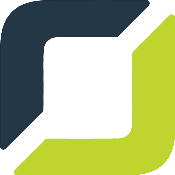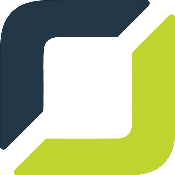Software-as-a-Service (SaaS) management is the practice of proactively managing and monitoring the purchasing, licensing and renewals of SaaS applications within an organization’s IT portfolio. It is quite common for businesses to use dozens or even hundreds of SaaS applications in their day-to-day operations; these SaaS applications are often used across all departments and play an important role in maintaining peak productivity.
The widespread use of SaaS tools has created numerous opportunities for businesses to grow and thrive; however, it also poses some challenges. Organizations must find new ways to manage a large number of tools while tracking new purchases, software cancellations and routine renewals. SaaS management platforms enable IT administrators to quickly and efficiently track application usage, manage application policies, automate IT tasks, take corrective actions and reduce software expenses.
Learn more about SaaS management and how to effectively use a SaaS management platform to reduce risks associated with unmanaged IT tools and technologies.
What Is SaaS Management?
SaaS management refers to the tracking and managing of an organization’s SaaS subscriptions to increase usage and reduce costs. It also focuses on gaining a deeper understanding of a business’s software stack. With the right SaaS management solution in place, organizations can gain better control over their operation and establish best practices across the business.
A SaaS management platform is commonly used by businesses to discover, manage and secure multiple SaaS applications from a single administrative dashboard. Comprehensive SaaS management platforms can help IT admins with a wide range of tasks, such as automating routine SaaS management tasks, optimizing SaaS app usage to boost productivity, gaining visibility into all in-use apps and protecting files and sensitive information in their environment.
Getting Started With SaaS Management
![]() While SaaS usage is increasing at a rapid speed across businesses of all sizes, challenges still exist. Software-as-a-Service can add complexity to an organization, along with a lack of visibility due to shadow IT. It is common for tools to overlap, resulting in wasted money, and not knowing who is using which app can result in security concerns.
While SaaS usage is increasing at a rapid speed across businesses of all sizes, challenges still exist. Software-as-a-Service can add complexity to an organization, along with a lack of visibility due to shadow IT. It is common for tools to overlap, resulting in wasted money, and not knowing who is using which app can result in security concerns.
SaaS management platforms can provide valuable insights as to which SaaS is in use, who owns each app and what the company is paying for various licenses and subscriptions. These insights can be useful for record-keeping and tracking purposes, and can also prove that SaaS is delivering an appropriate return on investment (ROI).
Here are some steps to get started with SaaS management:
1. Review The Existing SaaS Portfolio
Without a SaaS management platform, it can be difficult to gain a clear picture of an organization’s SaaS environment. This lack of visibility into user activities and data is a common challenge for IT professionals that can have costly repercussions. SaaS management platforms are designed to provide businesses with full IT visibility into all SaaS applications in use.
A centralized platform provides users with useful details, such as each app in the environment and who is using these apps. The dashboard also reveals what apps have been granted OAuth access. SaaS management platforms can even deliver visibility into shadow IT, which refers to unsanctioned apps that employees use without approval from the IT department.
When getting started with SaaS management, it is important to have a solid understanding of the organization’s existing SaaS portfolio. With data available from a SaaS management platform, organizations can uncover potentially redundant SaaS apps, consolidate SaaS app usage to save on license fees and identify functionality gaps within the SaaS portfolio.
2. Establish A Vetting Process For New Apps
Regardless of how many SaaS apps an organization already has, there is a strong possibility that it will continue adding more to its portfolio. However, it is important to properly review and vet new apps to ensure that they are providing value and worth the investment.
There are several aspects to consider when vetting new SaaS apps, such as features, permission controls, security and ease of integration. Also, ensure that the apps are compliant with applicable regulations pertaining to the business and its customers. Failure to ensure compliance can result in reputational damage to the brand and potential legal action against the business.
3. Classify The SaaS Application Lifecycle
Organizations that use Software-as-a-Service technology should be aware of a concept known as the SaaS application lifecycle. The idea behind this concept is that SaaS applications go through multiple lifecycle states while in use within an organization. It is important to understand these different states to make it easier to manage SaaS applications. Here is a simple lifecycle classification commonly used by businesses.
- Mapped: This is a tool that is known but has not yet been classified to any state
- In Review: This classification means still in the process of reviewing and assessing the tool, including functionality, price and security compliance
- Managed: This is a sanctioned tool that has been reviewed and approved for internal use within an organization
- Optimized: This is a paid tool that has been subjected to an optimization process in an attempt to reduce costs
- Retired: This is a tool that must be closed and have all user accounts revoked
4. Map The Usage Of SaaS Apps
![]() After establishing a list of SaaS applications and their lifecycle state, map the actual users of each application and measure the frequency of their use. Mapping SaaS application usage can have multiple advantages, such as improved access management. Access management helps ensure that only relevant personnel have access to the systems they need to keep data secure and to meet compliance and privacy regulations.
After establishing a list of SaaS applications and their lifecycle state, map the actual users of each application and measure the frequency of their use. Mapping SaaS application usage can have multiple advantages, such as improved access management. Access management helps ensure that only relevant personnel have access to the systems they need to keep data secure and to meet compliance and privacy regulations.
Mapping application usage can also be beneficial in cost management. Keeping track of users who actually use the applications can help organizations maintain good cost control. Money is wasted when businesses do not understand the actual SaaS usage, resulting in duplicate tools or underutilized licenses. Once an organization achieves an accurate mapping of SaaS application users, it can take the necessary steps to remove app access when it is no longer needed, such as when employees leave the company.
5. Organize Documents And Records
Businesses can save significant time and money by keeping SaaS-relevant documents and records organized. Instead of spending time combing through emails to find a non-disclosure agreement (NDA) from a vendor, or manually looking through files for a SaaS application contract, a SaaS management platform makes it easy for users to find exactly what they need.
Relevant SaaS documents from vendors should be stored with a SaaS system of records to ensure that all information and documents are in one location and accessible. Complete the system of records by keeping up with renewal dates and maintaining a system that notifies the business ahead of time when a renewal is coming.
6. Automate SaaS Product Adoption Processes
Businesses can significantly minimize errors and lag times by automating as many SaaS product adoption processes as possible. Set up a SaaS management platform to perform discovery and monitoring of SaaS application usage. These platforms can also be useful in collecting information regarding SaaS activity within a network.
Configure monitoring tools to automatically send notifications to administrators when problems develop that require attention from humans. SaaS management platforms can also be used for other tasks, such as notifying admins when apps become dormant or when an app that had previously been discontinued starts being used again.
7. Control SaaS Application Costs
Spending can quickly get out of control when organizations begin purchasing SaaS licenses and subscriptions without first establishing a solid tracking system. This is especially true when multiple payment methods are used, such as credit cards, wire transfers and invoices. When SaaS spending visibility for IT is low, spend control is also low, often resulting in wasted money.
As an essential component of SaaS management, organizations should develop a SaaS spend dashboard that provides information to business units in a simple way that is easy to understand. This allows business units to achieve good visibility on cost, allowing them to better control spending and reduce waste.
8. Streamline User Onboarding And Offboarding
Employees must know how to properly use SaaS apps to minimize their ramp-up time. Connecting employees with the apps that they should be using can help streamline the onboarding process and boost productivity. With a strong SaaS management platform, businesses can get their new staff up and running as quickly as possible.
Offboarding is just as important as onboarding, especially when it comes to security. When an employee leaves the company, it can put sensitive data at risk. Businesses must ensure that these employees have returned all work data and that their access credentials have been revoked as soon as they leave the company.
9. Mitigate Data Security Risks
 While the use of SaaS apps can have tremendous advantages for growing businesses, it can also make organizations vulnerable to certain security risks. To mitigate these risks, SaaS management platforms can be used to automate file security to ensure that the business is immediately notified when a document has been shared publicly. It is also a good idea to implement a least privilege access model that prevents too many users from gaining access to certain apps.
While the use of SaaS apps can have tremendous advantages for growing businesses, it can also make organizations vulnerable to certain security risks. To mitigate these risks, SaaS management platforms can be used to automate file security to ensure that the business is immediately notified when a document has been shared publicly. It is also a good idea to implement a least privilege access model that prevents too many users from gaining access to certain apps.
SaaS management platforms can also be used to locate and protect sensitive data. Businesses can then take action to protect these files, such as by unsharing them. SaaS management platforms should also provide the tools needed to create and enforce IT security policies.
Get Started With A SaaS Management Platform From Orases
SaaS management is quickly becoming an important area of IT as more businesses choose to adopt this technology. For more information about how to effectively utilize a SaaS management platform, reach out to the SaaS development experts at Orases today.






